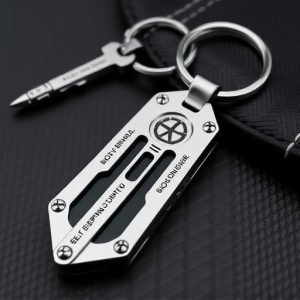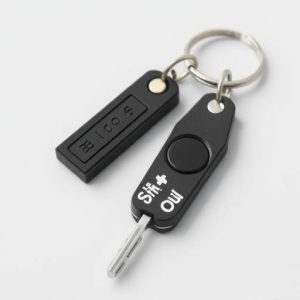Keychain Quick Release Mechanism: Enhancing Pressure Point Defense
Mastering keychain pressure point defense moves equips individuals with a unique self-defense strate…….
Mastering keychain pressure point defense moves equips individuals with a unique self-defense strategy using a common keychain as a tactical tool. By applying strategic force to specific body areas, these techniques temporarily incapacitate an attacker, enabling quick escape. The Quick Release Mechanism (QRM) in keychain safety devices deploys a locking mechanism with a simple twist or push, ensuring keys are secure yet accessible. Regular training ensures the effectiveness of this compact, discreet, and powerful self-defense tool for both indoor and outdoor use.
- Understanding Keychain Pressure Point Defense Moves
- How the Quick Release Mechanism Works
- Benefits and Best Practices for Using This Safety Device
Understanding Keychain Pressure Point Defense Moves
Understanding Keychain Pressure Point Defense Moves is crucial for anyone looking to enhance their personal safety. These moves, designed around a keychain safety device with a quick release mechanism, focus on leveraging pressure points to disrupt an attacker’s grip and enable a swift escape. By learning these techniques, individuals can transform everyday carry items like keychains into potent self-defense tools.
The key to effective Keychain Pressure Point Defense Moves lies in the precise application of force at specific pressure points on the body. A well-timed flick or twist of the keychain can target areas such as the wrists, elbows, or even the eyes, temporarily disorienting or neutralizing an assailant. This strategic approach allows users to gain precious time for escape and de-escalation, making it a valuable skill in self-defense scenarios.
How the Quick Release Mechanism Works
The Quick Release Mechanism (QRM) is a revolutionary feature in keychain safety devices, designed to provide instant protection and easy accessibility. This innovative system operates by leveraging a strategic pressure point defense move. When activated, the QRM swiftly deploys a locking mechanism that secures or releases the keychain with a simple twist or push, ensuring your keys are always within reach yet safely protected.
The heart of this mechanism lies in its precision-engineered components, allowing for rapid response times. By applying pressure at specific points on the keychain, users can quickly activate the QRM, preventing accidental or unauthorized removal. This feature is particularly beneficial in high-pressure situations, offering a swift defense move that keeps your keys secure while ensuring you’re never stranded without access to your vehicle or home.
Benefits and Best Practices for Using This Safety Device
The keychain pressure point defense move is a powerful tool for self-defense, offering multiple benefits that make it a must-have accessory for personal safety. Firstly, its compact size and quick-release mechanism allow users to deploy the device swiftly and discreetly in various situations. This flexibility enables individuals to defend themselves with confidence, whether they’re outdoors or in public spaces.
Best practices involve keeping the keychain within easy reach at all times, ensuring it’s accessible without drawing unnecessary attention. Regular training in pressure point techniques enhances effectiveness; users should practice proper grip and pressure application for optimal results. Additionally, maintaining the device’s functionality through periodic testing ensures its reliability when needed most.
The keychain pressure point defense moves, combined with the quick release mechanism, offer a practical and effective personal safety solution. By understanding how this simple device works and adhering to best practices, individuals can gain confidence in their ability to defend themselves in various situations. The benefits are clear: it’s a compact, discreet self-defense tool that provides peace of mind without compromising convenience. So, whether you’re a seasoned martial arts enthusiast or simply seeking added security, embracing this innovative keychain safety device could prove invaluable.


